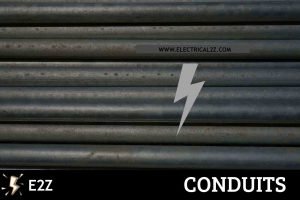All electricians have to do some estimating and costing. People want to know what it will cost before contracting for a job. In electrical wiring, estimating requires a lot of time and effort. The electrician must charge the customer for the materials to be used (e.g., wires, switches, plugs), the cost of labor and supervision, overhead expenses (e.g., the cost of maintaining an office and operating trucks) plus enough to make a profit.
If you bid on a commercial or industrial job, as the electrical contractor you must provide a detailed listing of what it will cost to do the job. A bid on residential wiring does not require so much detail. However, before preparing any bid, you should have a set of drawings that specify all of the materials to be used and what is to be done.
Table of Contents
Checklist For Estimating and Costing
- Receptacles
- Light fixtures
- Switches: 3-way, 4-way, single-pole
- Receptacle cover plates
- Switch cover plates
- Boxes; square, octagonal, switch, receptacle
- Wire nuts, hangers, connectors, ground clips, staples
- 240-volt service
- Electrical cables
- Receptacles
- Oven
- Surface burners
- Dryer
- Others
- Circuit breakers
- Circuit breaker box
- Different types of wires (signal and Romex)
- Electrical conduit pipes
- PVC conduit pipe fittings
- Labor
- Travel
- Overhead
- Miscellaneous
Electrical Estimating and Costing For The Materials
In determining the cost of materials to be figured in the overall estimate, one technique is to take the price paid for the material and double it. Most electrical supply houses have a list price and a net price. You, the electrician, will pay the net price, but you should use the list price in estimating. Estimates done this way provide enough leeway to allow you to offer the customer a discount for prompt payment and still make a profit.
Using Past Experience as a Guide in Estimating
After a job is complete, you can determine exactly what it cost to do it. You can figure what it cost to install a fixture, an outlet, a switch, or any other device. Then you can use this figure when preparing estimates for other, similar jobs. It will save much time if you have a reliable price to attach to specific jobs, such as the installation of a switch or dimmer. Then you simply count the number of switches, dimmers, outlets, or whatever is to be installed. Multiply by the per-unit installation price you have determined based on experience. This technique allows you to arrive at an accurate estimate for a job quickly.
Technique For Saving Money
One money-saving technique is buying in quantity. If, for example, you buy the supplies for two, three, or more jobs at one time, you can buy by the box or by 1000 feet of wire and obtain a better price than if you were buying by the unit or by smaller rolls of wire. Unit cost is lower this way, and you benefit from this by being able to bid lower on a job, thus increasing your chances of getting the job, and/or by being able to please customers by offering a discount for prompt payment.
Using a Calculator
The hand-held calculator has become so inexpensive that almost everyone now has one. It is a valuable tool for the electrician and electronics technician inasmuch as it can speed up the problem solving and computation that is often a part of electrical and electronics work.
Many models of calculators are available. Some are complicated, with many formulas and other information stored on a chip. With simpler models, you must know the formula to be able to figure out the units you need for a particular problem. In general, electricians do not need complicated and expensive calculators.
All that is needed is a basic calculator with at least one level of memory capable of performing the following functions:
- Square root √
- Reciprocals 1/x
- Squares x2
- Trig functions, especially cosine cos
- Addition +
- Subtraction −
- Division /
- Multiplication x
- A pi (p) key is also useful in some instances.
In most cases, the calculator will take p out to eight decimal places. If, however p is rounded to 3.14 or 3.14159, a different answer will result. Most calculators with memory and trigonometric tables also have the ability to do scientific notation. Many also are designed with U.S. metric conversion formulas already stored for easy use.
When you purchase a calculator, read the instructions carefully and practice how to use the calculator to solve different types of problems. Then, when you need to use it on the job, you will be thoroughly familiar with its capabilities and be able to solve problems quickly.
Final Word
Hope you understand this article about Electrical Estimating and Costing. Incase of any doubt please comment below. Subscribe our website to get every new post update to your email. Please follow our website – ElectricianWorld.net for future updates. Thank you for visiting our website.



